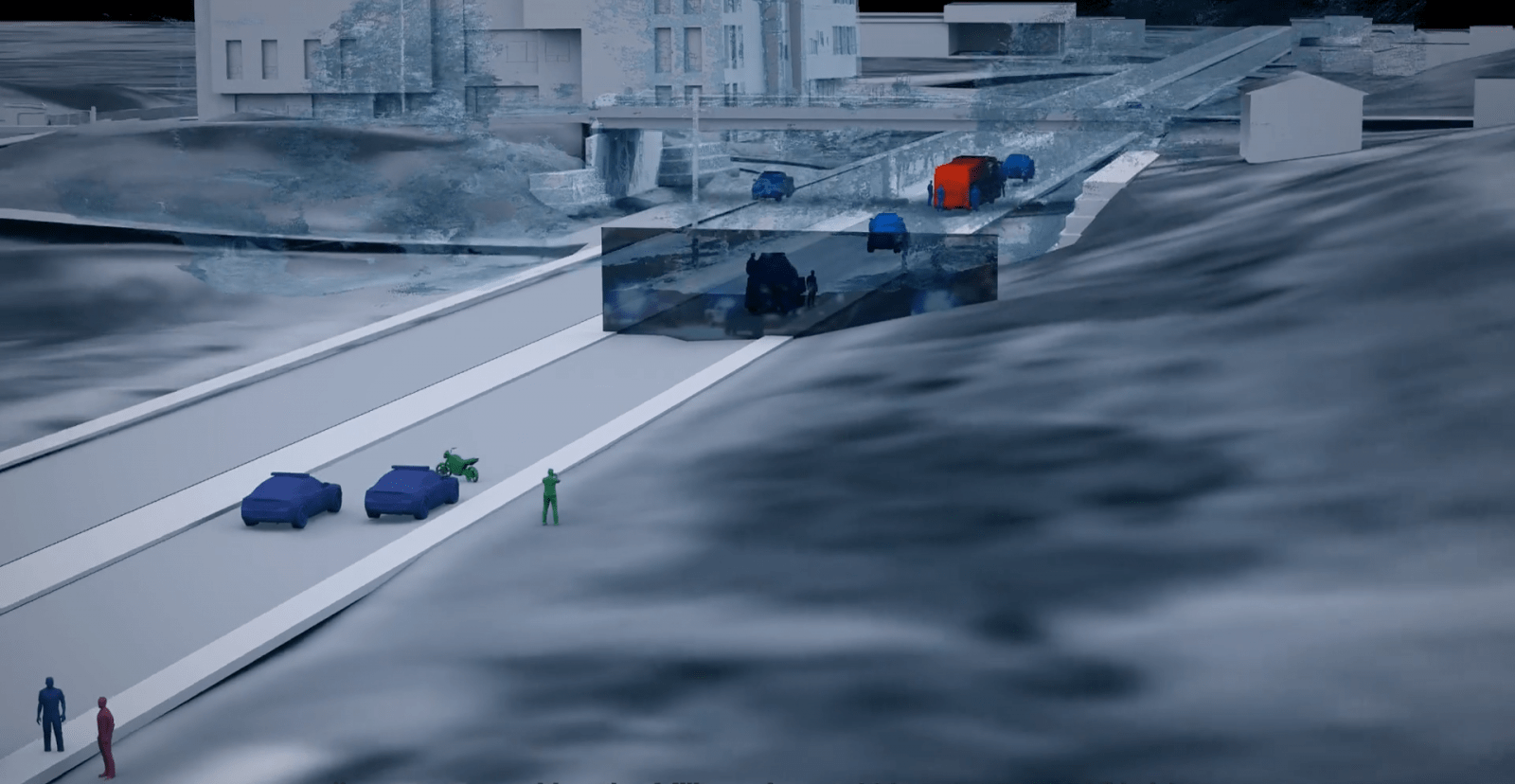Commissioned By
Additional Funding
Methodologies
Forums
On the night of the 26–27 September 2014, a group of students from the Ayotzinapa Rural Teachers’ College were attacked in the town of Iguala, Guerrero, Mexico. Their assailants were local police, in collusion with criminal organisations, and other branches of the Mexican security forces, including state and federal police and the military.
At the end of a night which has become an indelible and defining moment in the history of modern Mexico, six people were dead, forty wounded, and forty-three students were forcibly disappeared. The whereabouts of those students remains unknown.
Instead of delivering justice for the families of the victims, the Mexican state constructed a fraudulent and plainly inconsistent narrative of that night’s events.
Working with the families of the disappeared, and NGOs within Mexico, Forensic Architecture (FA) developed an interactive cartographic platform to explore that narrative and its conflicts and inconsistencies.
Our goal was to provide a forensic tool for researchers, to strengthen civil society’s capacity to investigate the Mexican state’s involvement in an historic crime.
We examined thousands of pieces of testimony, interviews, videos, and phone records from reports composed by independent investigators from the Inter-American Commission on Human Rights (IACHR).
We turned this information into data-points, plotted within an interactive platform. In the platform, users can explore the relationship between incidents—such as shootings, movements and communications—and actors, including the victims, state security agents and members of criminal organisations.
The data reveals instances of collusion and coordination between state agents and organised crime, and identifies contradictions in the account of the night presented by Mexican state authorities. It also makes clear the extent to which that account diverges from the account later presented by the IACHR’s investigators.
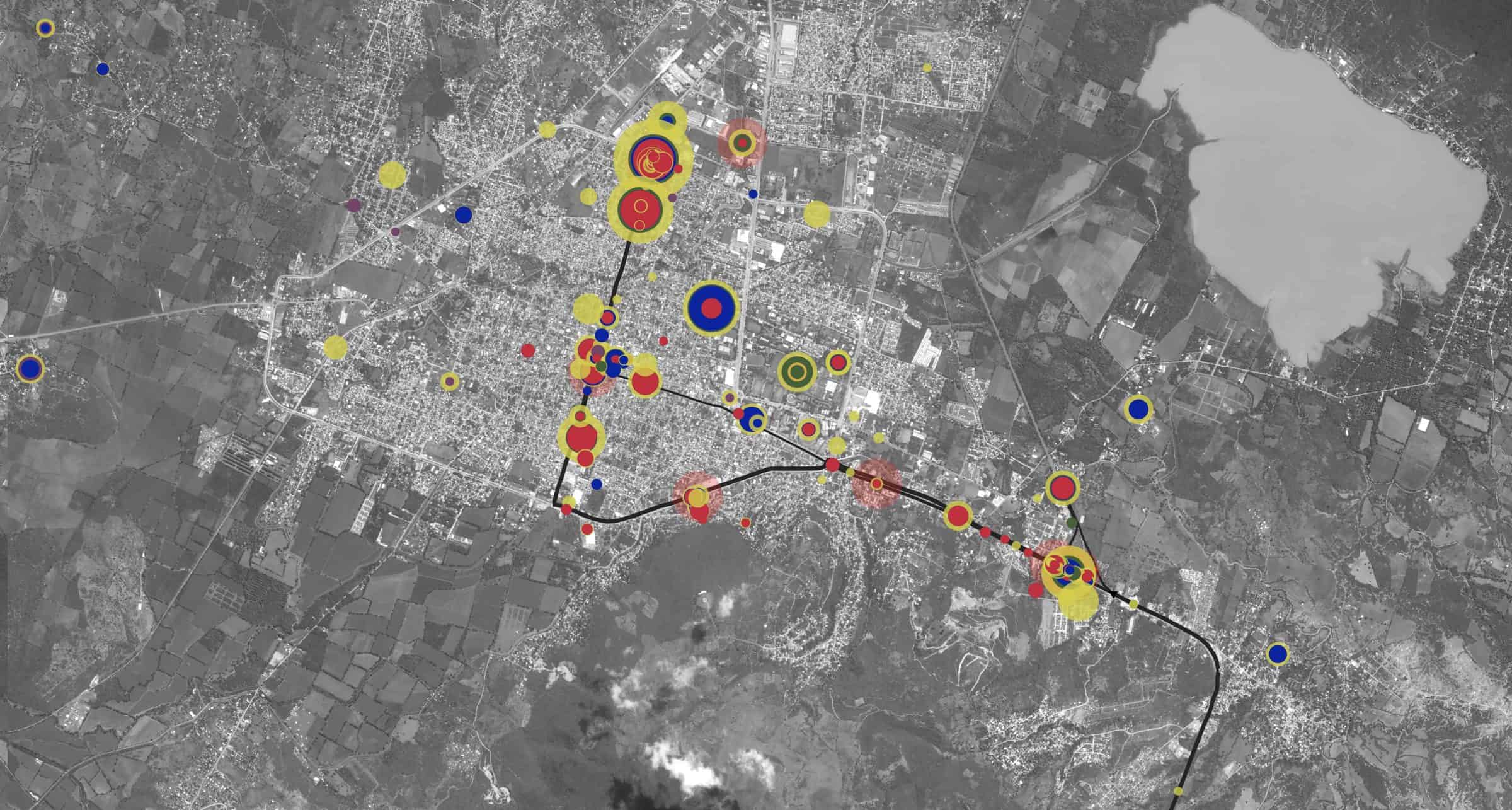
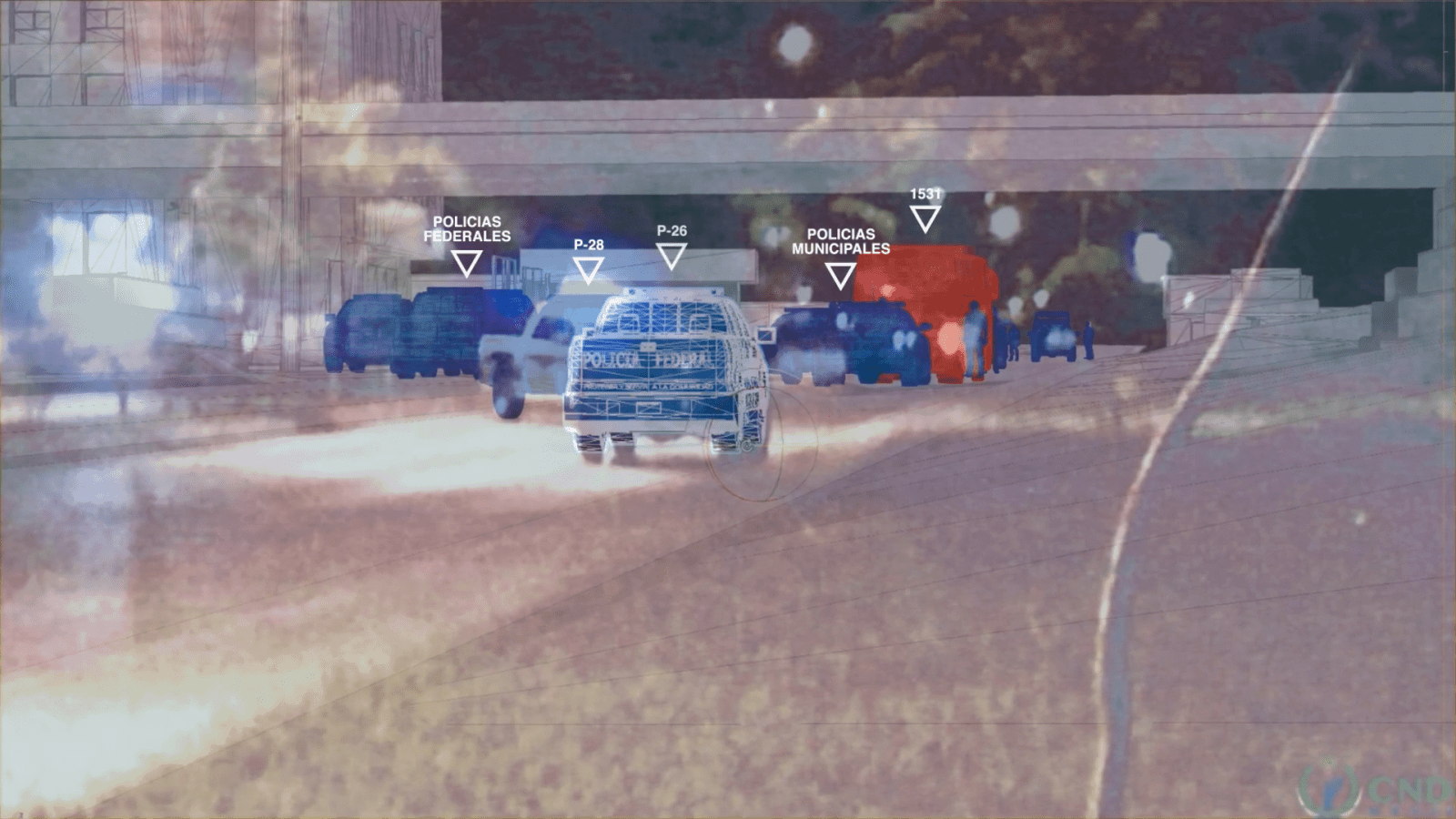
Through our partnership with the families of the disappeared, we also hope to demonstrate the ways in which civil society collectives can employ innovative tools to investigate complex crimes, confronting criminal impunity and the failures of Mexican law enforcement.
Above all, the insufficiency of the Mexican state’s investigation is laid bare, and the Attorney General’s ‘historical truth’ is exposed as a fiction.
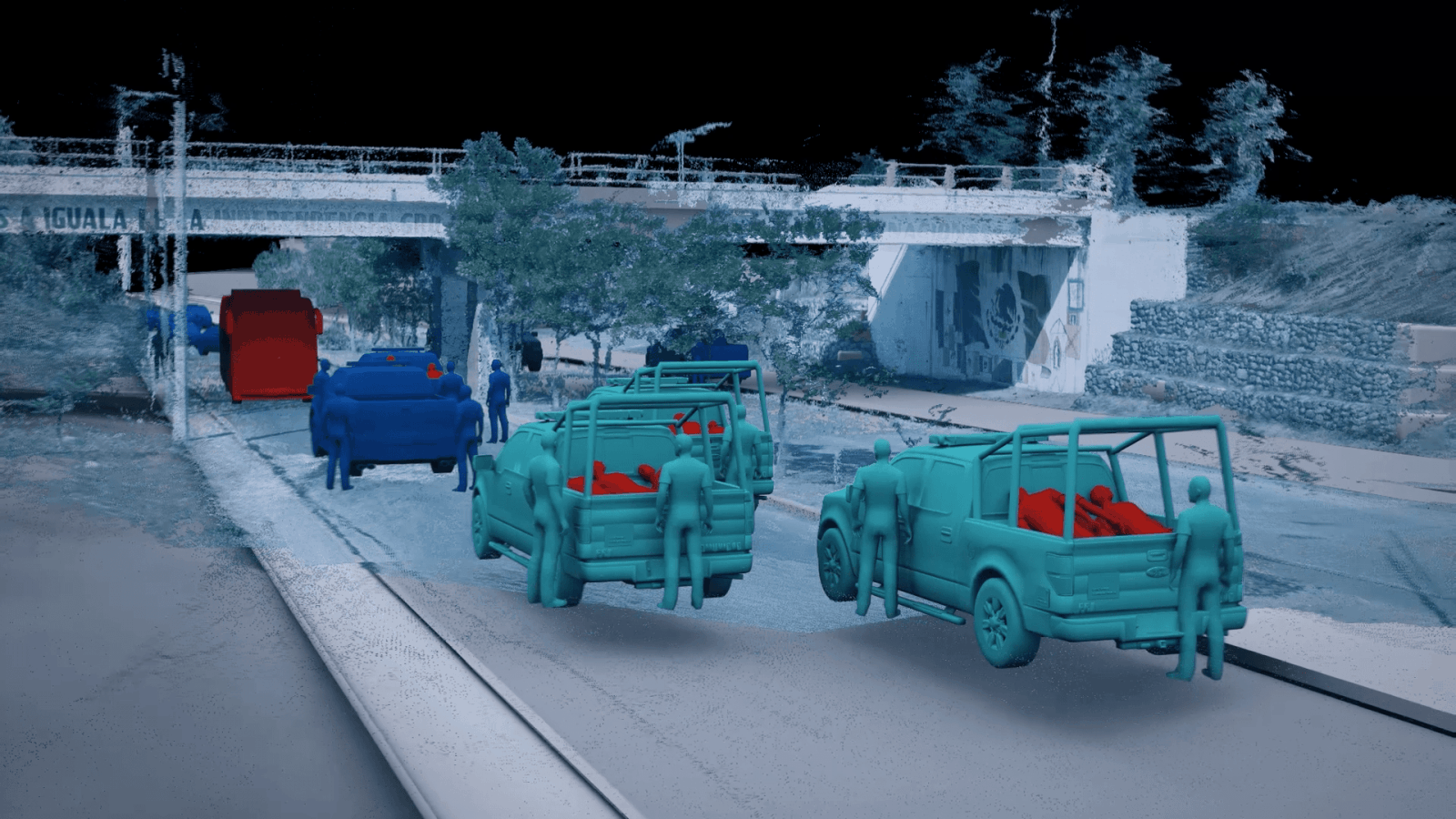
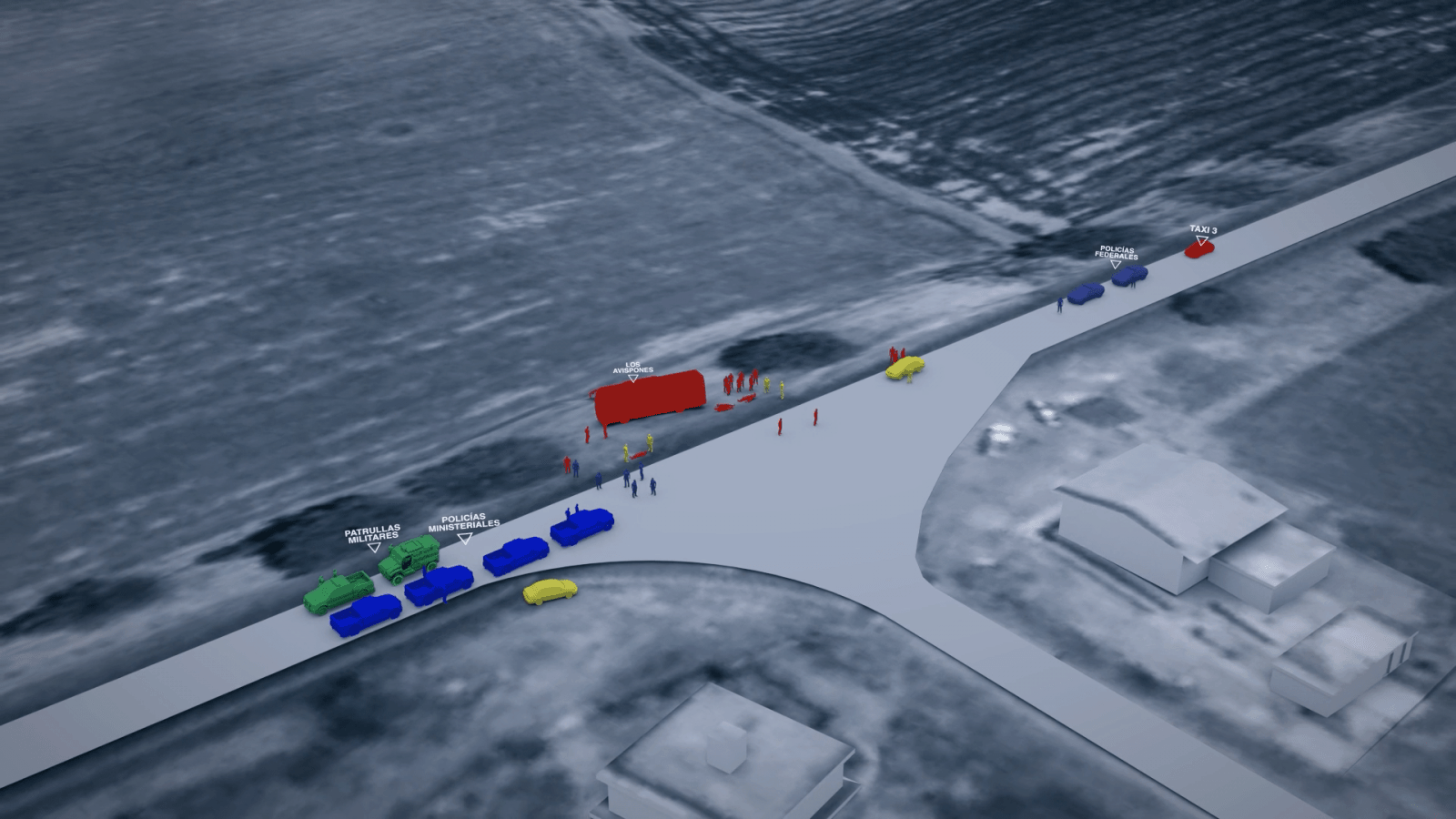
Our investigation into the disappearance of the students from Ayotzinapa is now part of the permanent collection at the University Museum of Contemporary Arts (MUAC), at Mexico’s National Autonomous University in Mexico City. Central to that exhibition is a graphic mural composed from the data drawn by our researchers from the pages of the GIEI and PGR reports, and the research of journalist John Gibler.
Drawing from the tradition of Mexican muralism, which have long addressed political and social themes, the mural charts the night of 26–27 September 2014 across the time and space through which those events unfolded. By representing graphically the testimonies of survivors, suspects and state representatives, and the narratives of the subsequent investigations into the case, the divergences between these many accounts of the night become evident.
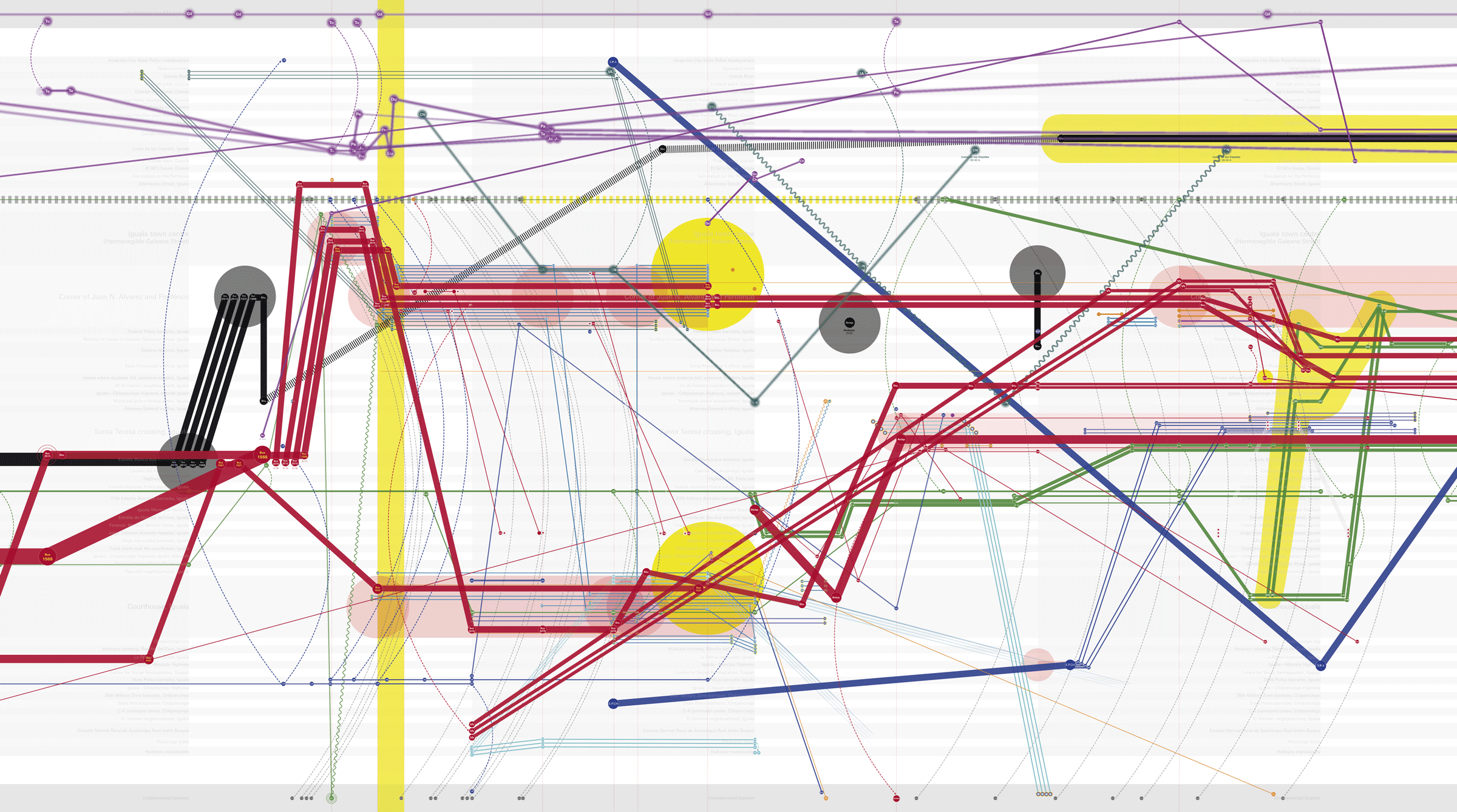
Update
 16.09.2019
16.09.2019
A judge in Mexico orders that 24 of the suspects originally arrested in connection with the disappearances should be freed from jail because they had been tortured while in custody. Days earlier, a man suspected of leading a gang involved in the disappearances was also released, on the same grounds.
Update
 26.09.2019
26.09.2019
On the fifth anniversary of the disappearances, investigative reporter and FA member Irving Huerta publishes new material which undercuts one of the most common hypotheses about the motives behind the disapperances.
According to that hypothesis, the vehicle identification number for one of the buses commandeered and driven to Iguala by the students on the night of the disappearances had been modified after the event, to disrupt the original investigation into the incident. The GIEI, who made this allegation, suggested that various details about the bus could have been changed in order to derail their inquiries.
Huerta’s investigation uncovers evidence in Ministry of Transport databases which challenges this hypothesis, as well as possible explanations for various changes to the bus’s physical appearance which would account for some of the GIEI’s suspicions.
Read our statement on the fifth anniversary here.
Methodology
Methodology
The starting point for this investigation is the extensive research undertaken by the Interdisciplinary Group of Independent Experts (GIEI) appointed in November 2014 by the IACHR. The GIEI carried out a thorough year-long investigation of the case and published two reports.
The GIEI reports are quasi-juridical documents, and are largely inaccessible to the general public. Our platform aim to complement its findings by establishing links and relations between the incidents it describes, and presenting those connections in a comprehensible and navigable manner.
The GIEI reports paint narratives radically different from the report originally presented by the Mexican Attorney General (PGR) and referred to as the ‘historical truth.’ They highlight contradictions, discrepancies and incomplete accounts present in the PGR’s investigation.
Our analytic process was based on a data-mining approach that scoured through more than a thousand pages of these reports, broke down the narratives in them into more than 5,000 individual incidents or data points which were subsequently arranged according to multiple categories in our data base.
Those data points describe locations, movements, attacks, mishandling of evidence and communications. Each data-point is then located, timed and tagged according to which actors were involved in them and what type of incident they described. Each was also assigned with a narrative description.
Following the process of data mining, Forensic Architecture developed an interactive platform to explore the relations between the resulting data points.
Built on top of a set of open-source software for interactive data analysis and web visualization such as d3 or Leaflet, the platform allows users to filter information using a tagging system relating to people, organizations and objects, as well as the classification of incident types.
The platform also contains a set of interactive 3D models, relating to three of the most important crime scenes. These interactive models allow users to explore the scenes along several distinct stages using the same structured data system.

